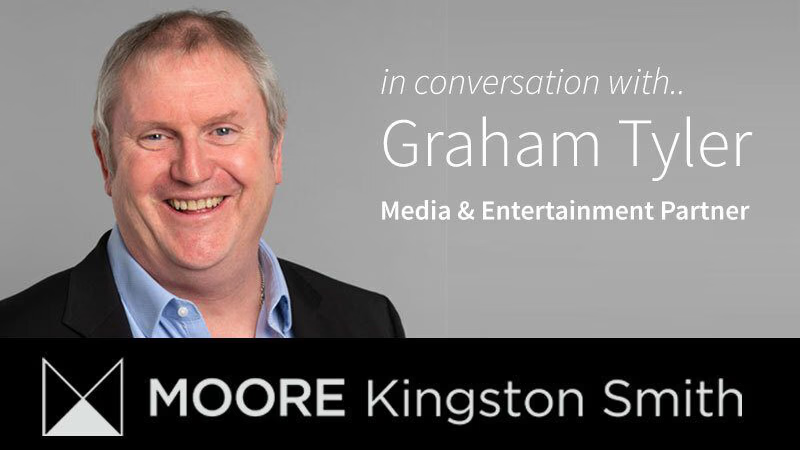In Conversation with Thinkbox
2 August 2022

Sound Reasons
Thinkbox’s Chris Dunne talks the tactics to grab attention in TV advertising
When it comes to effective communications, attention is everything. Since 2005, the marketing body for commercial television in the UK, Thinkbox, has captured the attention of advertisers by helping them get the best out of what TV in its many forms has to offer. Even in the crosscurrents of the crowded, multi-platform 21st-century mediascape, TV continues to stand out.
Its shareholders are Channel 4, ITV, Sky Media, and UKTV – collectively comprising 99 per cent of commercial TV advertising revenue. It has an international reach, too, as a member of The Global TV Group, which shares knowledge, best practice and global TV intelligence across Europe, the USA, Canada, Australia and South America.

Thinkbox has been the source of valuable industry studies across a range of strategic hotspots, from multi-award winning investigations into advertising effectiveness to ethnographic studies of media consumption habits, and how to successfully integrate TV with online advertising opportunities.
But what are the essentials when it comes to attention in advertising. For Thinkbox’s head of marketing, Chris Dunne, “digital impressions and viewability metrics prove inadequate as a proxy for ad exposure, but by measuring someone’s actual gaze direction, advertisers can get a better idea of what media channels and placements deliver higher visual attention.”
Of course, we don’t all sit and watch television fully focused all of the time. It’s not like Gogglebox. The living room is a shared space, where viewers talk, argue, eat, drink, come and go, scroll their phones, switch channels. “The attention challenge with TV advertising is ultimately in the hands of the creative,” says Dunne. “Advertisers need to make ads that viewers actually want to watch.”
TV advertising thrives on attention, but what viewers pay attention to, and what distracts them, is hard to pin down. “A recent study by ITV monitored TV viewing in 64 households and used 360-degree video footage to observe the different levels of attention for 17,000 ad exposures,” says Dunne. “It found that viewers paid full visual and aural attention 22pc of the time. But 18pc of the time there was aural distraction, and 27pc of the time there was aural attention but visual distraction.”
So that means that, on average, one in five ads earn full viewer attention – an impressive stat that emphasises, for Dunne, the impact of frequency. “Get your ad seen five times and you know, on average, one of those exposures will be with absolute full attention. However,” he adds, “there is no silver bullet, the answer is to make a bloody good ad!”
Which demands top-class creative teams seamlessly coming together to deliver the goods. “Creativity is at the heart of the most effective advertising campaigns,” says Dunne, “so supporting the British Arrows – where excellence in creativity is elevated and celebrated – is a vital part of our mission at Thinkbox.”
Among the key attention-grabbing tools that advertisers can use to keep viewers glued when the ad-break comes, is clever media planning. “Deploy pizza delivery ads just before dinner time, trainer ads in sports programming, charity ads when there’s a relevant storyline in the soaps. But outside of this, creative can cut through all potential barriers, and audio is key, because sound is not a sense we can turn on and off in the same way we can choose to look at something or look away.”
And while we think of TV as predominantly visual, Dunne says that it’s sound that grabs the attention of viewers. “Sounds is what creates visual upshifts to the TV set. Sound is what brings our attention back to the screen,” he says. “Jingles, taglines and pop songs ensure that even when visual attention is low, your ad will still be having an effect.” He cites Domino’s yodelling ad spots, or the TV and radio spots for Ocado, built around an original song. “All these have distinctive audio assets that help brands build mental availability,” he says, “so they and not their competitors come to mind when their target consumer is in a purchase situation.”
Understanding the platforms you’re advertising on, and how they are consumed by audiences, is another foundation for successful viewer interaction. Dunne suggests that different executions for different platforms – from TV to YouTube, Facebook or Instagram, for example – are not an option, but a necessity. “YouTube is the most TV-like out of the social platforms, and is by far the biggest option to extend TV-like reach, but for Facebook or Instagram, TV ads simply won’t work. If you’re using these platforms, you need to make a bespoke ad and a different creative execution, while maintaining the same creative strategy.”
Get it right, and the big numbers start lighting up – “running TV spots alongside social media can boost the effects of social by 31pc,” says Dunne, “but to really take advantage of this multiplier you’ll need creative consistency.”
He’s also contemplating an expansion of the TV advertising landscape, as world-dominating streamers like Netflix find their models faltering and belts tightening with a steep post-pandemic drop-off in subscribers that runs to millions, and the likelihood of ad-funded programming coming to a ubiquitous streamer near you. “Netflix recently announced plans to add a lower cost, ad-funded subscription tier to attract new customers,” says Dunne, but if a big wedge of its current subscriber base opts for a cheaper, ad-funded option, he sees trouble ahead. “Netflix will have quite a hole to fill with ad revenue from a standing start of zero,” he says, “There are more unknowns than knowns at this point, so it really is a case of ‘watch this space’.”



